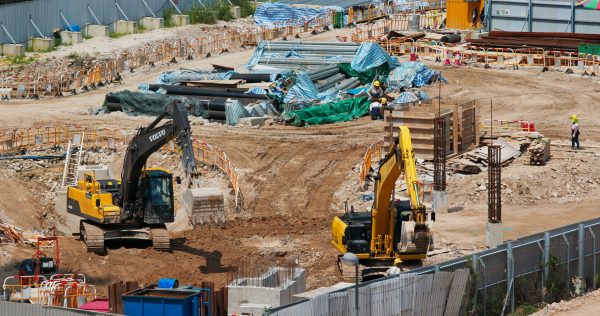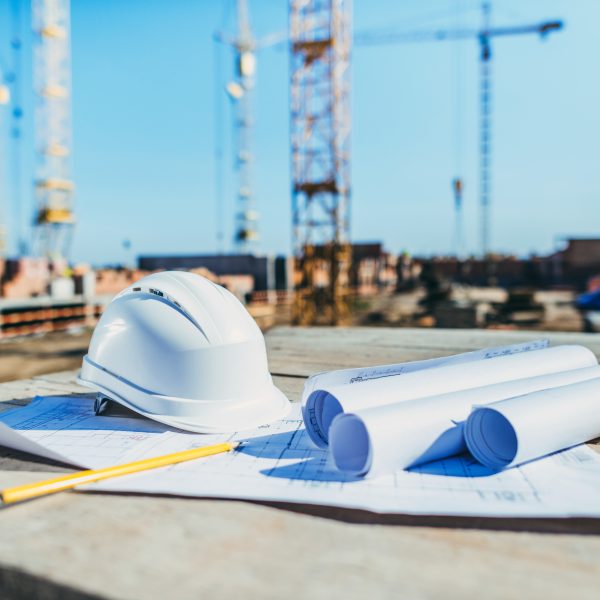
In civil engineering, construction projects span vast landscapes and intricate structures. Therefore, the ability to analyze data remotely has become a game-changer. With advancements in technology and connectivity, civil engineers are leveraging remote analysis techniques to monitor, assess, and optimize construction projects from anywhere in the world. Evidently, these techniques have shown positive results. For instance, as per the McGraw Hill report’s findings, about two-thirds of Architectural BIM Modeling users have indicated a favorable return on investment. Among the BIM users, around 87% reported a positive ROI, with 93% expressing confidence in the potential for further long-term value. In this blog, we’ll delve into the fascinating realm of remote construction data analysis, exploring its significance, methodologies, and real-world applications.
Understanding Remote Construction Data Analysis
Remote construction data analysis revolutionizes the traditional approach to construction oversight. It eliminates the necessity for physical presence at project sites. This innovative method involves the collection, processing, and interpretation of construction-related data. Furthermore, the method offers insights into various critical parameters without the constraints of geographical proximity.
The scope of data analyzed encompasses a diverse array of factors crucial to project success. From assessing structural integrity to monitoring material properties, evaluating environmental conditions, and tracking project progress, remote construction data analysis provides a comprehensive understanding of the project’s dynamics.
Significance in Modern Civil Engineering
The ability to analyze construction data remotely offers many benefits to civil engineers, project managers, and stakeholders. Firstly, it enhances safety. It minimizes the need for personnel to be physically present in hazardous environments. Additionally, it improves efficiency. It enables faster data collection and analysis. Therefore, decision-making and problem-solving become quicker. Moreover, remote analysis facilitates better collaboration among multidisciplinary teams and provides stakeholders with timely updates on project status and performance.
How Remote Civil Engineers Analyze Construction Data: Methodologies and Technologies
Sensor Technology
Remote construction data analysis relies on a diverse array of methodologies and technologies to collect and interpret data efficiently and accurately. One prominent approach involves the integration of sensors directly within structures. These sensors allow engineers to monitor critical parameters such as temperature, strain, and vibration. Moreover, these sensors, strategically embedded throughout the construction site, continuously gather real-time data, which is wirelessly transmitted to a centralized system for processing and analysis by engineers. By monitoring these key factors, engineers can detect potential issues early on. It allows for timely intervention and mitigation measures. Therefore, structural integrity and safety are ensured.
LiDAR Technology
In addition to sensor technology, drones equipped with advanced cameras and LiDAR (Light Detection and Ranging) sensors play a pivotal role in remote construction data analysis. These aerial vehicles are capable of capturing high-resolution imagery. Therefore, engineers will be able to generate detailed 3D models of construction sites with unparalleled accuracy. By conducting regular drone surveys, engineers gain valuable insights into project progress. Additionally, they will be able to identify discrepancies between planned and actual construction. Therefore, their decisions will be more effective. LiDAR technology also enables engineers to create precise topographic maps and assess terrain conditions, enhancing site planning and optimization efforts.
Satellite Imagery
Satellite imagery represents another indispensable tool in the arsenal of remote construction data analysis. It can capture broad spatial coverage from orbiting satellites. Therefore, engineers gain a comprehensive view of large-scale projects and remote locations. Moreover, Satellite imagery provides valuable context for assessing environmental conditions. It helps monitor site development over time and identifies potential risks or obstacles. Therefore, by integrating satellite imagery with other data sources, engineers can gain deeper insights into project dynamics and make informed decisions to drive project success.
BIM

Furthermore, Building Information Modeling (BIM) software serves as a central platform for consolidating and visualizing construction data. BIM enables engineers to create digital representations of infrastructure projects. It creates detailed 3D models of structures, systems, and components. Therefore, incorporating data from sensors, drones, and satellite imagery into BIM models helps engineers simulate construction processes. Moreover, spatial relationships will be analyzed. Potential conflicts or inefficiencies will also be easily pointed out. Without a doubt, BIM software enhances collaboration among project stakeholders. It facilitates communication and coordination throughout the project lifecycle.
In summary, remote construction data analysis leverages a range of innovative methodologies and technologies to gather, process, and interpret data effectively. From sensor technology embedded within structures to aerial drones, satellite imagery, and BIM software, these tools empower engineers to monitor project progress, assess site conditions, and make informed decisions to ensure the successful execution of construction projects. By harnessing the power of remote analysis, engineers can optimize project outcomes, enhance safety and efficiency, and deliver high-quality infrastructure that meets the needs of communities around the world.
Real-World Applications of Remote Construction Data Analysis
The application of remote construction data analysis is diverse and far-reaching, spanning various stages of the construction lifecycle. During the planning phase, civil engineers use remote sensing technologies to conduct site surveys, assess terrain conditions, and identify potential risks. Throughout the construction phase, remote monitoring systems track progress, detect deviations from design specifications, and provide early warnings of structural anomalies or safety hazards. Post-construction, remote analysis facilitates asset management, predictive maintenance, and performance evaluation to ensure the longevity and sustainability of infrastructure assets.
Overcoming Challenges and Limitations
Remote construction data analysis offers numerous advantages. However, it also presents challenges and limitations that must be addressed. Connectivity issues, data security concerns, and interoperability barriers are common obstacles faced by civil engineers when implementing remote analysis technologies. Additionally, the reliance on automated systems and algorithms may introduce inaccuracies or biases in data interpretation. Therefore, careful validation and verification by human experts are required. Moreover, the upfront costs associated with deploying remote monitoring systems and training personnel on new technologies can be prohibitive for some organizations.
Future Outlook On Remote Construction Data Analysis
Despite these challenges, the future of remote construction data analysis looks promising. Advancements in technology and data analytics are ongoing which drive innovation in the field of civil engineering. Artificial intelligence and machine learning algorithms are increasingly being integrated into remote monitoring systems. Therefore, predictive capabilities are enhanced and decision-making processes are automated. Furthermore, the emergence of 5G connectivity promises to revolutionize remote data transmission and enable real-time collaboration on construction sites like never before. As the industry continues to evolve, civil engineers will continue to leverage remote analysis techniques. These techniques are here to build safer, more efficient, and sustainable infrastructure for future generations.
Conclusion

Remote construction data analysis represents a paradigm shift in the way civil engineers approach and manage construction projects. By leveraging advanced technologies and analytical tools, engineers can remotely monitor, analyze, and optimize project performance with unprecedented accuracy and efficiency. As the world becomes increasingly interconnected, the role of remote analysis in civil engineering will only continue to grow, shaping the future of infrastructure development and driving innovation in the field. With the right strategies, methodologies, and technologies in place, remote civil engineers are poised to tackle the challenges of tomorrow’s construction projects head-on, ensuring a brighter and more resilient future for generations to come.
Partner with BizForce and harness the expertise of our excellent and tech-savvy civil engineers worldwide! With cutting-edge remote analysis techniques, we’ll optimize project performance and drive innovation in infrastructure development. Connect with us today. Click here.
